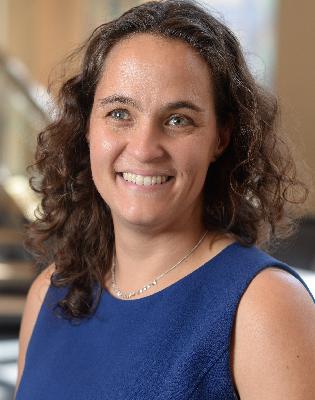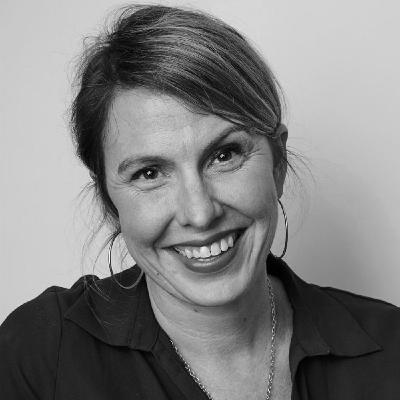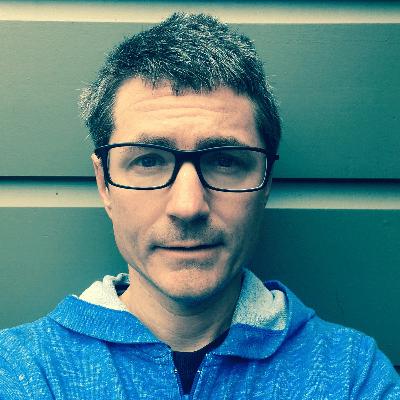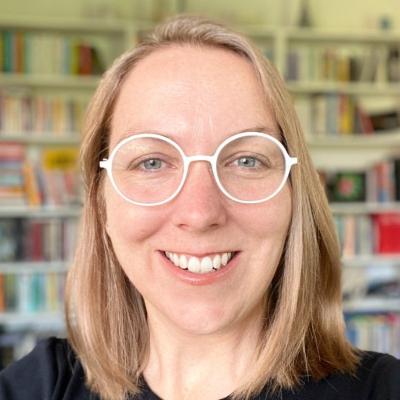44: The Mindful Executive (ft. Christina Goldschmidt)
Description
Transcript
Jesse: I’m Jesse James Garrett,
Peter: and I’m Peter Merholz.
Jesse: And we’re finding our way,
Peter: Navigating the opportunities
Jesse: and challenges
Peter: of design and design leadership,
Jesse: On today’s show, in a conversation recorded in November 2023, Christina Goldschmidt reflects on her first 60 days on the job as the newly appointed VP of product design for the music industry giant Warner Music Group. She offers thoughts on getting up to speed and finding early success as an incoming leader, profiling your stakeholders as if they were users, the leadership power of personal vulnerability.
Peter: Christina. Thank you so much for joining us.
Christina: Thanks so much for having me. I’m so happy to be here.
Peter: As, usual for us want to start out just by getting a better sense of who you are and what you’re up to. I know you’re in a new role, so if you could just share kind of your professional affiliation and, what are you doing now?
Christina: Yeah. Yeah. Thanks. So I have been in the field of digital design for over 25 years and that’s been many twists and turns. And I just started a new role as the VP of Product Design at Warner Music Group. And I’m just a few days shy of hitting my 60 day mark And so it’s a very, very interesting time to have a chat about that.
And my role there is that I lead product design, which is both user experience design and visual design, but also working to build out our user research practice. Also, our brand new content design team, design operations, and making sure that we are just a fully functioning working product design team.
Also adding things like design systems, things like that.
Starting a new role
Peter: It sounds like you’re introducing a lot of. new elements into the organization. Was that something that they knew they needed and were looking for the leader to bring it? Or was that part of a conversation you were having with them as they were talking to you? Like, oh, this is, this is what I would want to do if you were to bring me in.
How did that conversation go?
Christina: Yeah. So one of the things that’s really interesting is that my entire hiring cycle was three weeks and I’ve never actually had a job, I think that was that quick, except for maybe 25 years ago. And so that was a real testament to them knowing a lot of what they wanted in a leader, but also trusting in me to be able to come in and diagnose everything that needed to happen.
And so we would have conversations along the way of maybe we need this, maybe we need that. So, halfway through the conversation saying, Oh, you know, we don’t have content here, so think about that. You know, that would be the kind of aspect of the conversation, but larger things like design systems the larger structure of how to build out research, adding design operations, those are things that they’re trusting me to really bring, diagnose and decide how to structure.
Peter: What group are you in? Are you reporting up to a product leader or are you in a different kind of organization?
Christina: Yeah. So, because Warner Music Group is a music company, I report to the president of technology. And so it’s very different than, say, my last job at Etsy, where we were a technology company and I used to report to the chief product officer. I’m still one away from the CEO, but I am in this interesting new space where our entire organization is the technology organization.
So now my immediate peers are engineering, product management, and something called product solutions, which is really our liaisons with the various labels and business, business partners.
Jesse: So you described this three-week sprint of a hiring cycle and, that just feels like this whirlwind where you have absolutely no time to prepare, no time to even really get your head around how you want to show up, who you want to be, who you need to engage with, how you want to engage.
It feels like you had to hit the ground running and make it up as you went along. How did you start figuring out how to engage this brand new organization? A very different kind of a problem, different kind of context than you were used to.
Christina: Well, I think that hiring process was sort of a, in a sense, a preview of what the job might be in the first year.
Jesse: In a good way, I hope.
Christina: In all honesty, right? Like, it’s a two-way street every single time you’re in a hiring process. And the concept is, is that it’s a startup within an enterprise company. And so being able to actually intelligently show up in a super fast hiring process, diagnose what they need so that I can show myself in my best light to them, shows that I can have basically a bunch of things thrown at me every single day and be able to diagnose that and move it forward.
It’s not for everyone, we’ll just say that, right? This was not a role that was for everyone. Yeah.
Peter: You know, one thing I’ve noticed, just following you on LinkedIn, is, and you mentioned it earlier, expanding the organization. Something else I also know about you is that you went and got an MBA at one point, so you know how to do math in spreadsheet form.
Christina: Yes, Yes, I do.
Peter: I’m sure your PowerPoint game is on point. But I’m wondering, what, if any, business case did you have to make around expanding your team? Was that something they had done the work to realize there’s some broader expansion and, we’ve already assumed it, or were you needing to argue for, may not be the right language, but help them understand the potential and opportunity and, thus do business casing. Like, how did you free up the resources for headcount?
Christina: When you’re undertaking something like this, that’s the first thing you ask. Especially in such a short cycle you want to understand how open they are to design, how much they value it, what they think the role of design will be and therefore my role. I was actually very happy and pleased to hear right out of the bat that they were already planning and had already started to put budgets in, that were very appropriate for things that I would want to need. And so I did not have to actually make the business case. When I got in the door, there was definitely finagling, horse trading, and things like that. I will say that immediately from day one, I had to prove value, and have to make sure that I’m not going to lose those heads, right?
But at least they understood and they value design and they see how important it is to build a really great product arm and that they had actually already allocated significant amount of head count to design. And that they left it up to me as to how to carve out that headcount.
Jesse: I think one of the biggest challenges for leaders who are new to an organization, trying to figure out how to deliver some kind of short term value, is the fact that they just don’t know anything yet. They don’t know anything about the context. They don’t know anything about what people really care about. They don’t know what their priorities ought to be, really, in terms of value delivery. And so I wonder, how did you go about learning the landscape in order to figure out where you could start delivering value right away?
Christina: Hmm. Yeah, so let’s be clear I don’t know anything. But I know just enough to be a little bit dangerous, right? One of the things that’s interesting about Warner is that their fiscal year starts in October. Planning was basically close to being done when I was walking in the door. And so, that was a really important time for me to understand where things were really important.
By knowing what their major focus areas were, and getting involved to help them make a better PowerPoint, to present that to the executive leadership team to the CEO so that we could convey that story, I was able to then say, Okay, I now understand this because I’ve helped to better visualize it and help us tell that story better
Jesse: Hmm.
Christina: And then understanding what that is, talking more deeply of… what does this mean, and having basically weekly prioritization conversations every week to say, I could choose to do 1000 things this week. Which do we think are the top three, five that matter this week?
And that kind of triage is really important.
Jesse: Who are you having those conversations with. Whose opinions really matter here?
Christina: Yeah, so it happens with my boss, the president of technology, and you know, I’m four in a box, right, with my other three peers. And it, oddly, is not happening all together. I’m having them as sort of more one-off conversations than triangulating it myself.
But it actually is pretty consistent. They’re just nuances that come with it when you have it as individual conversations. And I actually think in our environment, it’s working very well because it allows me to be that filter as























